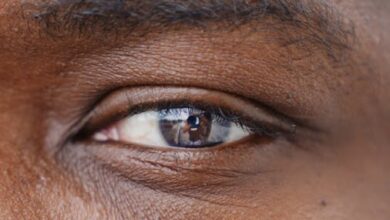The Biological Symphony: How Your Body Senses Dehydration

What Is Thirst? Understanding Your Body’s Essential Signal
Estimated Reading Time: 7-8 minutes
- Thirst is a sophisticated biological signal, orchestrated by the brain to maintain the body’s crucial fluid balance, far beyond just a dry mouth.
- Specialized osmoreceptors in the hypothalamus detect subtle changes in blood osmolality, triggering the sensation of thirst and the release of ADH to conserve water.
- Beyond obvious symptoms, subtle signs like fatigue, headaches, brain fog, and dark urine are early indicators of dehydration that should not be ignored.
- Optimal hydration is vital for virtually all bodily functions, including temperature regulation, digestion, nutrient transport, joint health, and cognitive performance.
- Proactive hydration habits—setting daily goals, carrying a reusable water bottle, and incorporating hydrating foods—are essential for preventing dehydration and supporting overall well-being.
- The Biological Symphony: How Your Body Senses Dehydration
- Beyond Dry Mouth: The Subtle Signs of Thirst
- Why Hydration Matters: The Far-Reaching Impact
- Actionable Steps for Optimal Hydration
- Conclusion
- FAQs about Thirst and Hydration
Thirst is a fundamental physiological signal, a powerful and often undeniable urge that prompts us to drink water. It’s our body’s ancient alarm system, finely tuned over millennia, designed to maintain the delicate balance of fluids essential for every biological process. Far more than just a dry mouth, thirst is a sophisticated internal communication, signaling a need for replenishment.
While we might experience it as a simple sensation, the underlying mechanisms are intricate. The effects of insufficient water are felt by every cell in the body, but it’s the brain that manifests our experience of thirst. This remarkable organ not only registers the need but also orchestrates our behavioural response, driving us to seek out and consume fluids, thereby safeguarding our health and survival.
The Biological Symphony: How Your Body Senses Dehydration
To truly understand thirst, we must look beyond the immediate sensation and delve into the intricate biological processes that trigger it. Our bodies are remarkably adept at maintaining , a state of internal equilibrium. When water levels drop even slightly, a cascade of events is initiated to correct the imbalance.
Specialized osmoreceptors in the hypothalamus, a vital brain region, are at the forefront of this detection system. These osmoreceptors are acutely sensitive to changes in the osmolality – the concentration of solutes like salts and minerals – of our blood. When we become dehydrated, the concentration of these solutes increases, making our blood thicker and more concentrated.
Upon detecting this rise in osmolality, the hypothalamus swings into action. It does two crucial things: first, it stimulates the conscious feeling of thirst, compelling us to drink. Second, it triggers the release of Antidiuretic Hormone (ADH), also known as vasopressin, from the pituitary gland. ADH acts on the kidneys, instructing them to reabsorb more water back into the bloodstream instead of excreting it in urine. This mechanism conserves our existing fluid supply, buying us time to find water.
Furthermore, significant drops in blood volume and blood pressure, which can occur during more severe dehydration, activate other systems. Baroreceptors, sensors located in blood vessels, detect these changes and signal the brain, further intensifying the thirst response and stimulating the release of hormones like angiotensin II, which also promotes fluid seeking.
It’s this complex interplay of neural signals, hormonal responses, and cellular communication that culminates in the unmistakable sensation of thirst, a testament to the body’s incredible self-regulating capabilities.
Beyond Dry Mouth: The Subtle Signs of Thirst
Many of us associate thirst solely with a parched throat or dry mouth. However, by the time these obvious symptoms appear, your body is likely already in a state of mild dehydration. True thirst, or the need for hydration, often manifests in more subtle ways that can be easily overlooked in our busy lives.
One of the earliest indicators is . If you find yourself inexplicably tired, sluggish, or experiencing a dip in energy levels, especially in the afternoon, consider reaching for a glass of water before another coffee. Even mild dehydration can significantly impact energy production at a cellular level, making everyday tasks feel more arduous.
Headaches are another common, yet frequently misattributed, sign. Dehydration can cause brain tissue to temporarily shrink due to fluid loss, pulling away from the skull and triggering pain. Many tension headaches or even migraines can be exacerbated or even caused by insufficient fluid intake.
Cognitive function also takes a hit. Difficulty concentrating, brain fog, irritability, or a decline in short-term memory can all stem from a lack of water. Your brain, being composed of approximately 75% water, requires optimal hydration to function efficiently, transmit signals, and process information.
Look at your urine colour. A healthy, well-hydrated person typically produces pale yellow urine. If your urine is dark yellow or amber, it’s a strong signal that your kidneys are working overtime to conserve water, and you need to drink more. Infrequent urination can also indicate dehydration.
Other less common but important signs include muscle cramps, particularly during or after exercise, as electrolytes are thrown off balance. Dry skin, chapped lips, and reduced skin elasticity can also point to a systemic lack of fluid. Even bad breath can be a symptom, as a lack of saliva allows bacteria to flourish.
Recognizing these subtle cues before intense thirst is key to optimal hydration and preventing dehydration’s negative effects on your body and mind.
Why Hydration Matters: The Far-Reaching Impact
Understanding what thirst is naturally leads to the understanding of why preventing it is so critical. Water is not merely a beverage; it’s an essential nutrient, solvent, and transport medium, indispensable for virtually every bodily function. Its importance extends across all systems, influencing everything from cellular health to organ performance.
Firstly, water is the primary component of all cells, tissues, and organs. It regulates body temperature through sweating and respiration, ensuring our internal environment remains stable. Without adequate water, the body struggles to dissipate heat, leading to overheating and potentially dangerous conditions like heatstroke.
Digestion and nutrient absorption rely heavily on sufficient water. It helps dissolve food, allowing nutrients to be absorbed into the bloodstream. Water also softens stool, preventing constipation and ensuring regular bowel movements. Conversely, dehydration can lead to digestive discomfort and impaired nutrient uptake.
For our joints, water acts as a lubricant, forming a crucial component of synovial fluid that cushions and protects them. Adequate hydration can reduce joint pain and improve flexibility. Similarly, water transports nutrients and oxygen to cells, while simultaneously flushing out waste products and toxins from organs like the kidneys and liver.
Beyond these physiological roles, hydration profoundly impacts cognitive function and mood, as discussed earlier. Maintaining optimal fluid levels contributes to better concentration, alertness, and emotional stability. Even mild dehydration can lead to significant dips in performance and well-being.
From supporting a healthy immune system to maintaining supple skin, regulating blood pressure, and ensuring proper nerve function, water is the unsung hero of our health. Neglecting our body’s cry for water, whether through obvious thirst or subtle signals, has widespread and detrimental consequences.
Actionable Steps for Optimal Hydration
Recognizing the signs of thirst and understanding its importance is the first step. The next is to proactively integrate better hydration habits into your daily routine. Here are three actionable steps you can take today:
-
Set a Daily Water Goal: Don’t wait until you’re thirsty. Aim for a specific amount of water each day, typically around 8 glasses (2 litres), though individual needs vary based on activity level, climate, and health. Use an app, set reminders, or simply track your intake with a marked bottle. Consistency is key here.
-
Carry a Reusable Water Bottle: Make water your constant companion. Having a water bottle readily accessible at your desk, in your car, or in your bag serves as a constant visual reminder to sip throughout the day. This simple act drastically increases your chances of staying hydrated without even thinking about it.
-
Incorporate Hydrating Foods: Water doesn’t just come from a tap. Many fruits and vegetables, such as watermelon, cucumber, strawberries, oranges, and lettuce, have high water content and contribute significantly to your daily fluid intake. Make these a regular part of your meals and snacks to boost hydration naturally.
Real-World Example: Consider Sarah, a marketing professional who often felt a midday slump, experiencing fatigue and a nagging headache by 3 PM. Her usual routine involved coffee in the morning and diet soda with lunch. After learning about the subtle signs of dehydration, she decided to try carrying a reusable water bottle and setting hourly reminders on her phone. Within a week, she noticed a remarkable difference: her energy levels were more consistent, the headaches diminished, and she felt more focused and productive throughout the entire workday. Her body was simply getting what it needed.
Conclusion
Thirst is far more than just a dry mouth; it’s a sophisticated biological warning system, meticulously orchestrated by the brain, signaling a fundamental need for water. From the cellular level to our cognitive function and overall well-being, adequate hydration is the cornerstone of health. Ignoring these signals, whether obvious or subtle, can have a pervasive impact on our energy, mood, and physical capabilities.
By understanding how our body senses and expresses thirst, and by proactively adopting simple hydration habits, we can move from merely reacting to dehydration to maintaining optimal fluid balance throughout the day. Listen to your body, honour its call for water, and empower every cell within you to perform at its best.
Ready to transform your hydration habits? Start by implementing one of the actionable steps today. For more insights on maintaining peak health and wellness, explore other articles on our blog!
FAQs about Thirst and Hydration
-
Q: Why do I get headaches when I’m dehydrated?
A: Dehydration can cause your brain tissue to temporarily shrink and pull away from the skull, leading to pain and often causing or exacerbating headaches and migraines.
-
Q: Can mild dehydration affect my concentration and mood?
A: Yes, absolutely. Even mild dehydration can significantly impair cognitive functions, leading to difficulty concentrating, brain fog, irritability, and a general dip in alertness and emotional stability.
-
Q: What is the easiest way to check my hydration status?
A: The easiest and most reliable visual cue is your urine color. If it’s pale yellow, you’re likely well-hydrated. Dark yellow or amber urine indicates a need to drink more water.





